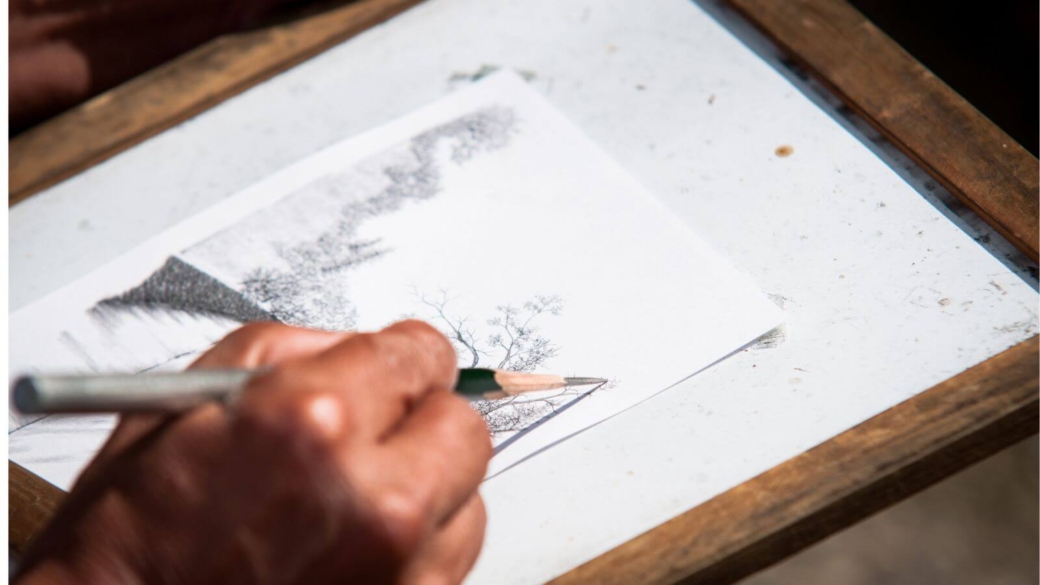Drawing trees may seem simple, but there’s a world of depth and detail waiting to be discovered. This article explores the fascinating art of tree sketching, a practice that’s not only therapeutic but can also enhance your overall drawing skills, making it accessible for someone who is just starting out or looking to refine their technique.
Understanding the Basics of Drawing Trees

A pivotal aspect of drawing trees lies in one’s perception. The difference between a regular depiction and a captivating sketch often hinges on how an artist perceives a tree. Seeing trees as a series of shapes, patterns, and textures, rather than simple plant forms radically alters one’s approach. For instance, perceiving the branches as lines forking off and leaves as clusters of teardrops contributes to a more realistic representation. Hence, an unconventional perception plays an essential role in the accurate, vibrant portrayal of trees.
Importance of Observation Skills
Observation skills hold crucial significance when it comes to sketching trees. Drawing isn’t just about a pencil meeting paper. It’s rooted in the power of observation. Noticing subtleties – the way branches arc, the pattern of bark, or the array of leaf sizes – elevates a piece from mere sketch to accurate depiction.
For instance, understanding that a pine tree’s needles cluster in certain patterns can give the rendering a more authentic feel. Consequently, honed observational skills effectively turns a learner into a master in the realm of tree drawing.
Starting with Simple Tree Shapes
Venturing into the realm of tree drawing, beginners find solace in tackling basic silhouettes first. This section serves as a guide, providing insights into initial tree structuring and practice techniques for simple tree drawing.
Guidelines for Selecting Initial Tree Structures
In the pursuit of tree drawing, it’s imperative to garner fundamental understanding of the various types of tree structures.
- Pay attention to the tree’s shape. For example, coniferous trees, such as pines, boast an inverted conical shape whereas deciduous trees, such as oaks, exhibit a broad round shape.
- Notice the pattern of braches. In several trees, branches tend to grow upward at a certain angle while others may have downward-growing branches, a characteristic witnessed in weeping willows.
- Capture the essence of the trunk. While most trees have a straight, central trunk like palms, some trees like baobabs feature a trunk that’s wide and bulbous.
- Identify the outline of foliage. Trees like maples have foliage shape similar to a flame while cypress trees have slim, tall foliage.
Practice Techniques for Simple Tree Drawing
Following the adage, ‘practice makes perfect’, prove true in the realm of tree drawing too. Embracing strategic methods, one could efficiently master simple tree drawing skills.
- Contour sketching, provides an excellent starting point. In this approach, capture the basic outline and shape of the tree without going into minute detailing.
- Silhouette drawing, provides a quick and effective way of understanding tree anatomy. Avoid any internal details and simply draw the outer shape.
- Gesture sketching, emphasizes on the rhythm and movement of the tree’s shape – its ‘gesture’. It’s less about accurate depiction and more about capturing the tree’s essence quickly.
- Textural sketching, allows capturing distinctive textures of trees. Experiment on bark textures or patterns of leaf clumps to add more realism to your sketches.
Evolving from basic forms to complex textures, embracing these practices offers a firm foundation in the enthralling journey of tree drawing. As one starts recognizing patterns and structures, the process of tree sketching not only becomes easier, but it also transforms into a restorative and enriching experience. For a creative twist, consider enhancing your practice by turning your tree sketches into paint by numbers personalised projects, adding a fun and unique dimension to your artistic journey.
Artistic Journey
Drawing trees isn’t just about creating a pretty picture. It’s an artistic journey that brings therapeutic benefits and hones your skills. Starting with basic shapes and moving on to intricate details like leaves and bark, you’ve learned how to capture the essence of trees in every season. You’ve also discovered the importance of texture in your drawings, using brush strokes and shading to add depth.



